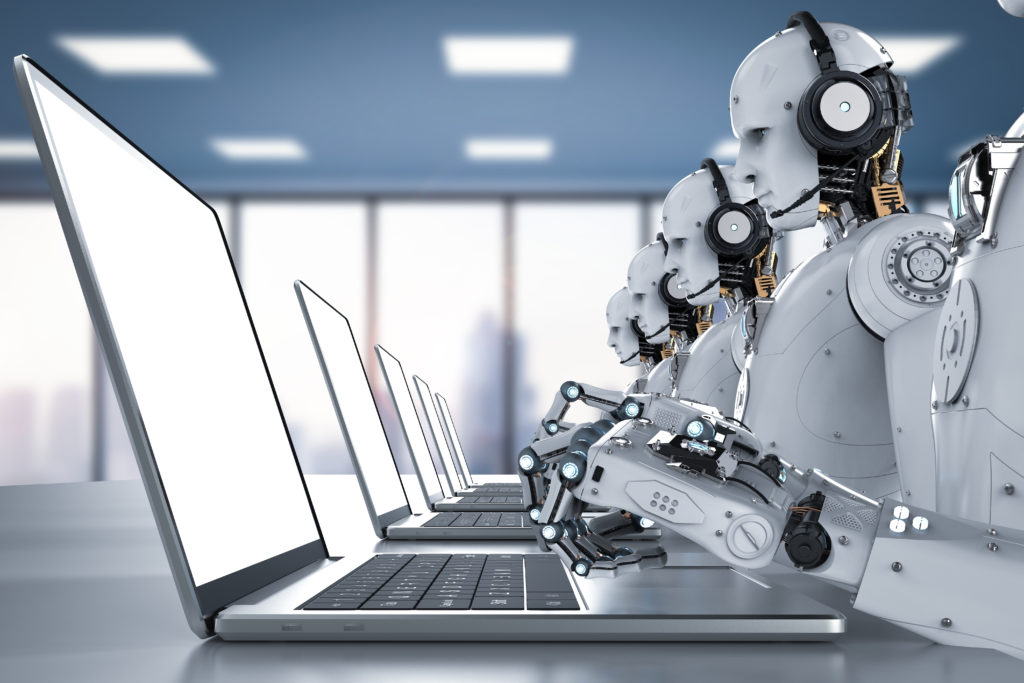by Kalyn Stockman
I can think of many unpleasant experiences I, an everyday customer, have had with customer support systems. You know, the ones where you’re on hold for thirty minutes, receiving automated messages that aren’t context-appropriate, or struggling to even express the root of your problem as you click through endless “press 1 if…” commands. Well, lucky for us customers, these dreaded interactions with companies should soon become rare occurrences.
I must begin by admitting that customers today aren’t exactly easy to please. Living in the digital age has created members of society who are technology-dependant and who demand convenience in nearly every aspect of their lives. If the capabilities to make interactions seamless and frustration-free exist, it makes sense that customers begin to expect them to be integrated everywhere possible.
Artificial Intelligence Grows Expectations
With the recent growth in AI technologies, basic customer service and support systems are shifting to intelligent contact centers (ICC). Intelligent contact centers utilize AI functions like natural language processing (NLP) and machine learning (ML) to create people-centric, positive digital experiences for customers and agents alike.
These functions began as a way to automate and standardize processes and shift the workload from humans to computers, but an unintended side-effect is that they’re giving customers higher expectations as they experience the benefits of AI-based customer service and support interactions. These benefits include immediate responses, quick issue identification, and personalized and consistent interactions—benefits that are quickly becoming ‘the new norm’ to customers. As today’s customers begin to grow comfortable with this current state, they will begin to expect even more.
Expectations Drive Innovation
Customers who have experienced the intelligent contact center will never want to go back to the old methods of customer service and support. This is certainly understandable, but to what extent should their expectations grow?
Several years ago, the basic chatbot was monumental in improving customer service and support systems. As time went on, and as customers became accustomed to this innovation, a basic chatbot became unsatisfactory because of its inability to create context-appropriate responses and find the root of the customer’s real issue. Customer expectations were growing, which created more urgency in the shift to intelligent contact centers integrated with far more advanced capabilities to satisfy customers demands.
This demonstrates the process of customer expectations pushing technology vendors to innovate, and leads to the question of how long the current state of ICC will satisfy customers before further innovation becomes urgent.
What Does This Mean For Customer Service And Support Leaders?
Customer service and support leaders must prioritize enhancing the digital experience. Customers expect each customer service and support experience to be as efficient and positive as the best one they’ve ever had (or better). Leaders must also work to create service and support systems that compare to, or outdo, those of competitors. This way, customers will not look elsewhere for better experiences. The combination of increasing customer expectations and evolving AI technologies creates urgency for customer service and support leaders to put time, money, and other resources into prioritizing the digital support experience.
Bottom Line
Intelligent contact center innovation and customer expectations seem to feed off of each other. Technology advancements create the opportunity for improved experiences, and this potential gives customers high hopes and expectations. The expectations then create a higher demand for further innovation and intelligent systems that ultimately minimize customer effort. This becomes an endless cycle. With every improvement, customers begin to wonder what the next improvement could be.
Customer service and support leaders should keep a close eye on emerging technologies that could potentially transform their support systems. Research should be done to find providers that are on a steady and innovative track to satisfying customer expectations with their technology. Keeping track of providers and their future plans can help leaders prepare for upcoming customer demands and eventually meet them. Putting focus on enhancing the digital experience is the best way for customer service and support leaders to increase customer satisfaction and decrease customer churn.
